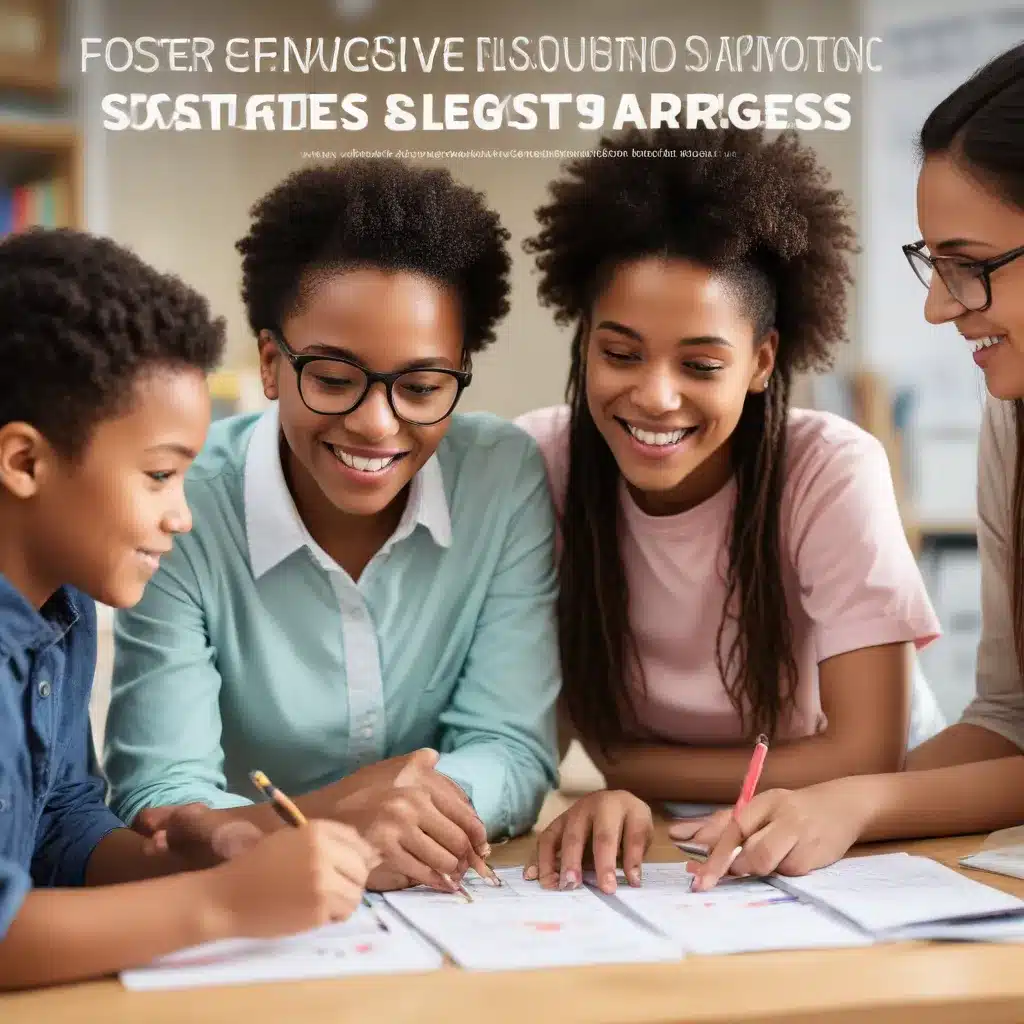
Understanding the Importance of Inclusive Education
In our increasingly diverse and multicultural society, fostering inclusive classrooms is more important than ever. As the student population becomes increasingly reflective of the rich tapestry of our communities, it is essential that schools adapt to meet the needs of all learners.
Inclusive education is a philosophy that recognizes and celebrates the unique strengths, learning styles, and perspectives of every student. By creating learning environments that are accessible, engaging, and supportive, we can empower all children, regardless of their background or ability, to reach their full potential.
At Stanley Park High School, we are committed to cultivating inclusive classrooms that cater to the diverse needs of our students. In this article, we will explore practical strategies and key principles that can help foster a truly inclusive learning environment, where every child feels valued, supported, and inspired to thrive.
Embracing Neurodiversity and Inclusion
Inclusive education is grounded in the understanding that differences in brain functioning, such as those seen in autism, ADHD, and dyslexia, are not deficits to be remedied, but rather variations to be celebrated. This paradigm shift, known as “neurodiversity,” reframes how we perceive and support students with diverse learning profiles.
By embracing a strengths-based approach to neurodiversity, we can transform our classrooms into inclusive spaces that not only cater to the academic success of neurodiverse students but also promote empathy, respect, and appreciation for diversity among all learners.
Creating an Inclusive Classroom Environment
Cultivating an inclusive classroom environment requires intentional design and thoughtful consideration of the physical space, as well as the overall culture and dynamics within the classroom.
Adapting the Physical Classroom
- Reduce sensory overstimulation by using soft, natural lighting and creating quiet zones for students to take breaks.
- Provide a variety of seating options, including bean bags, stability balls, and standing desks, to accommodate different physical and learning needs.
- Incorporate visually clear and organized spaces, with defined areas for different activities to help students navigate the environment.
- Display visual schedules and use other visual aids to support students, especially those on the autism spectrum, in understanding classroom routines and expectations.
Fostering an Inclusive Classroom Culture
- Model inclusive behavior and use positive, respectful language that celebrates diversity and individual differences.
- Collaboratively establish classroom rules and expectations that promote a safe, welcoming, and inclusive environment.
- Encourage peer-to-peer support and collaboration, allowing students to learn from one another’s unique strengths and perspectives.
- Incorporate lessons and activities that educate students about neurodiversity, cultural differences, and the importance of inclusion.
- Empower students to advocate for themselves and their peers, fostering a sense of community and shared responsibility.
Implementing Inclusive Teaching Strategies
Effective inclusive teaching requires a flexible, adaptable, and student-centered approach. By incorporating the principles of Universal Design for Learning (UDL), educators can create learning experiences that cater to the diverse needs and learning styles of all students.
Multiple Means of Representation
- Present information in a variety of formats, such as visual aids, audio recordings, and hands-on activities, to ensure all students can access the content.
- Utilize text-to-speech software, screen readers, and other assistive technologies to support students with reading, writing, or language-based challenges.
Multiple Means of Action and Expression
- Offer students multiple ways to demonstrate their understanding, such as written assignments, oral presentations, or multimedia projects.
- Implement interactive notebooks, digital portfolios, or other tools that allow students to showcase their learning in personalized ways.
Multiple Means of Engagement
- Tailor lesson plans to incorporate students’ interests, strengths, and prior experiences to increase motivation and engagement.
- Provide opportunities for student choice, allowing them to select topics, formats, or methods that align with their unique learning preferences.
- Encourage goal-setting and self-reflection, empowering students to take an active role in their own learning journey.
Fostering Collaborations and Community Partnerships
Creating inclusive classrooms extends beyond the school walls. Collaborating with families, community organizations, and other stakeholders can strengthen the support network for all students, particularly those with diverse needs.
Partnering with Families
- Establish open and frequent communication with parents and caregivers to understand each student’s unique needs, strengths, and learning preferences.
- Invite families to participate in the development of Individualized Education Plans (IEPs) or other support plans, ensuring a shared understanding of goals and strategies.
- Provide resources, workshops, and opportunities for families to learn about inclusive education and how they can support their child’s learning at home.
Engaging the Community
- Collaborate with local organizations, such as disability advocacy groups or community service providers, to connect students and families with additional resources and support.
- Invite community members, including those with diverse backgrounds and experiences, to share their stories and perspectives with students, fostering a greater understanding and appreciation for diversity.
- Explore opportunities for students to engage in community service projects or internships, allowing them to apply their learning in real-world settings and develop valuable life skills.
Championing Inclusive Education
At Stanley Park High School, we believe that inclusive education is not just a pedagogical approach, but a fundamental right for all children. By embracing diversity, celebrating differences, and empowering every student to reach their full potential, we are not only transforming the educational landscape, but also cultivating a more just, equitable, and inclusive society.
As we continue our journey towards fostering inclusive classrooms, we invite you, our school community, to join us in this important work. Together, we can create learning environments that inspire, empower, and enrich the lives of all our students, now and for generations to come.

